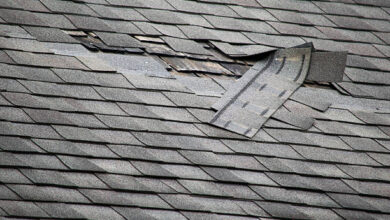Cost Evaluation of Brisbane Concrete Retaining Walls
Concrete retaining walls are famous for their durability and functionality in landscaping and construction projects in Brisbane. However, before diving into a project involving concrete retaining walls, it’s essential to understand the factors that can impact the overall cost. This article will break down the cost evaluation of Brisbane Concrete Retaining Walls into 12 key points, helping you make informed decisions for your next project.
Understanding Concrete Retaining Walls
Concrete retaining walls in Brisbane serve as crucial structures designed to hold back soil in sloped areas, preventing erosion and supporting landscapes. These walls are highly favoured for their robustness and versatility, fitting into various landscaping projects. With the capability to be moulded into diverse shapes and finishes, concrete retaining walls offer functional benefits and enhance the aesthetic appeal of properties.
They are engineered to withstand the harsh Brisbane climate, from extreme heat to heavy rains, ensuring long-term stability and minimal upkeep requirements. Their construction, however, demands careful planning and execution to achieve the desired outcome.
The Importance of Professional Assessment
Initiating a project without a thorough professional assessment can lead to unforeseen complications and inflated costs, particularly for concrete retaining walls. This critical step involves a detailed site examination by a qualified engineer or contractor, who will consider various factors such as soil composition, slope, drainage needs, and the proximity of existing structures.
Such an evaluation ensures the selection of the most appropriate type of retaining wall and identifies potential obstacles that could affect both the project’s design and financial aspects. For instance, areas with poor soil conditions may require additional reinforcement, impacting the overall budget.
Additionally, a professional assessment can provide valuable insights into the most efficient construction methods and materials, further optimising the project’s cost-efficiency. Engaging with experts at this early stage is indispensable for aligning project expectations with practical realities and laying a solid foundation for completing a retaining wall that meets structural and financial objectives.
Various Types of Concrete Retaining Walls
In the realm of landscaping and construction within Brisbane, a spectrum of concrete retaining wall types exists, each distinct in form and function. Gravity walls, primarily leveraging the weight of concrete to resist soil pressure, emerge as a cost-effective choice for lower height requirements. Cantilever walls, on the other hand, employ a lever action to provide more significant support and are typically used for higher demands.
However, this design necessitates more complex engineering and incurs higher costs. Anchored walls, whether gravity or cantilever, incorporate cables or rods anchored into the soil or rock behind them, offering enhanced strength and stability for challenging soil conditions or constrained spaces.
The selection process among these variants is dictated by an array of project-specific factors, including but not limited to the height of the intended wall, the site’s soil characteristics, and the project’s overall budgetary framework. This diversity in design options facilitates accommodating a wide range of project requirements and aesthetic preferences, allowing for tailored solutions that align with functional and financial considerations.
Permits and Regulations in Brisbane
Navigating the permits and regulatory landscape is critical in constructing concrete retaining walls in Brisbane. Engaging with local council requirements early in your project planning phase is imperative to avoid potential penalties and project delays. Each council may have unique guidelines and stipulations regarding the construction of retaining walls, including height restrictions, boundary considerations, and the impact on neighboring properties.
The cost of obtaining these necessary permits varies, depending on the scope and complexity of the project. Incorporating permit-related expenses into your initial budget is advisable to ensure a comprehensive financial plan. Adhering to the specified regulations ensures that your retaining wall is legal and built to the highest safety standards.
Consultation with a professional experienced in Brisbane’s local council regulations can streamline this process, offering guidance on securing permits efficiently and correctly, ultimately safeguarding your investment and facilitating a smoother project execution.
Material Costs for Concrete Retaining Walls
The financial outlay for materials in constructing concrete retaining walls in Brisbane forms a significant part of the overall budget. The primary components include the concrete itself, which may be utilised in block form for segmented retaining walls or poured in situ for a more continuous structure. The cost of concrete blocks and poured concrete varies, with prices influenced by the quality and strength grade required for the project. Steel reinforcements are often necessary to enhance the wall’s structural integrity, with costs fluctuating based on the quantity and type of steel used.
Appropriate drainage systems are crucial to prevent water build-up behind the wall, involving materials such as perforated pipes and gravel. Backfill materials, which support the wall and facilitate drainage, also contribute to the material expenses. The selection of higher-quality or specialised materials can increase the material costs but may offer better durability and reduced maintenance needs over the lifespan of the wall. Considering each material choice carefully is essential to balance initial costs with long-term value and performance.
Retaining Walls Brisbane Cost of Labour
The labour cost for constructing concrete retaining walls in Brisbane is a significant component of the overall budget and varies widely depending on several factors. The complexity of the wall’s design, the height and length, and the site’s accessibility all influence the amount of time and labour required for the project. Generally, projects that require specialised skills or equipment to navigate challenging terrain or to implement intricate design features will incur higher labour costs.
Additionally, the demand for skilled tradespeople in the Brisbane area can affect labour rates, with higher demand leading to increased costs. It is essential to obtain detailed quotes from contractors that explicitly break down the labour charges, ensuring transparency and aiding in budget management. Comparing Retaining Walls Brisbane Cost against the scope of work will help assess the project’s feasibility and cost-effectiveness, allowing for informed decisions on modifications that could lead to savings without sacrificing quality or design integrity.
The Impact of Site Accessibility
Site accessibility is pivotal in determining the overall expenditure on concrete retaining walls. Challenging access to the site can significantly escalate the costs involved, primarily due to the increased labour hours and the need for specialised machinery to transport materials and perform construction tasks efficiently. For example, a site in a densely populated area or one with narrow entry points necessitates using smaller, more manoeuvrable equipment, which is less cost-effective than standard machinery.
Similarly, sites with steep slopes or uneven terrain could require additional groundwork to ensure safe and efficient construction practices, impacting the budget. Recognising these factors early in the planning phase allows for a more accurate estimation of project costs. It helps identify potential strategies to mitigate these financial impacts, such as altering design plans or scheduling to accommodate more efficient access.
Design and Aesthetic Considerations
Incorporating bespoke designs and aesthetic embellishments into concrete retaining walls significantly influences the financial outlay of such projects. Personalised touches, from intricate patterns to custom colours, and additional features like integrated lighting or incorporated seating elevate the visual appeal and the project’s cost. These aesthetic preferences extend beyond mere functionality, reflecting the homeowner’s style and enhancing the overall landscape. It is imperative to balance these design aspirations with budgetary constraints.
Discussing these elements with your contractor early in the planning phase allows for exploring cost-effective alternatives that achieve a similar visual impact without compromising the project’s financial viability. Material choices, for instance, can be adjusted to mimic high-end finishes at a lower cost. This strategic approach ensures that the final design meets aesthetic desires and aligns with the project’s budgetary framework, maintaining the endeavour’s visual and financial integrity.
Durability and Maintenance
When considering the long-term implications of constructing concrete retaining walls in Brisbane, the focus on durability and subsequent maintenance needs must be balanced. Opting for superior quality materials and adhering to best-practice construction methods might present a higher upfront cost but will invariably pay off by minimising the need for repairs and maintenance. The resilience of high-grade concrete, coupled with expertly integrated reinforcement, ensures that the wall can withstand the pressures of soil and water and resist the harsh Queensland climate.
Regular maintenance checks are advisable to identify and address minor issues before they escalate into significant concerns. This proactive maintenance approach extends the retaining wall’s lifespan, thereby enhancing its cost-effectiveness over time. Selecting suitable materials and construction partners is pivotal in securing a structure that balances initial investment with enduring value.
Potential Additional Costs
When embarking on a project involving concrete retaining walls, one must anticipate possible additional expenses that could impact the overall budget. These expenses often encompass the groundwork necessary to prepare the site for construction, which may involve levelling the ground, removing vegetation, or even demolishing existing structures to make way for the new wall. Furthermore, properly disposing of waste materials generated during construction can contribute to the total cost.
Another consideration is the potential for unforeseen challenges, such as encountering rock that requires specialised equipment to remove or dealing with waterlogged soil that necessitates extra drainage solutions. These unexpected scenarios can adjust the project’s scope and, consequently, its costs. Planning for these possibilities from the outset will help create a more accurate budget, mitigating the risk of significant financial surprises as the project progresses.
Retaining Wall Cost Brisbane -Saving Tips
Consider several practical strategies to manage the costs of installing concrete retaining walls in Brisbane without compromising on quality. One helpful approach is opting for standardised designs and materials, often more cost-efficient than bespoke options. Additionally, scheduling your project during off-peak seasons might result in lower labour rates and quicker turnaround times, as contractors have more availability.
It’s also wise to source materials locally to reduce transportation Retaining Wall Cost Brisbane and, if feasible, reuse or recycle materials from other projects. Engaging in DIY, such as preparing the site or handling the finishings, can reduce professional fees. Finally, thorough research and comparison of quotes from different contractors can uncover more competitive pricing, ensuring you receive value for your money without sacrificing the integrity and aesthetic of your Brisbane concrete retaining wall.
Getting Quotes and Choosing a Contractor
Selecting the right contractor is crucial for your Brisbane concrete retaining wall project. Begin by soliciting multiple estimates to ensure a broad understanding of the market rates and services offered. Look for contractors with a solid track record and the necessary experience, prioritising those who can provide comprehensive cost breakdowns, realistic timelines, and clear warranty conditions. It’s also wise to review their previous projects and request references to gauge their reliability and quality of work.
When comparing quotes, consider the price and the value – a slightly higher quote might offer better materials, more thorough site preparation, or a more durable end product. Engaging in open communication with potential contractors about your expectations and budget can uncover cost-saving opportunities without compromising the project’s outcome. Choosing a contractor is a decision that balances cost with expertise, reliability, and the assurance of a well-executed retaining wall installation.
Conclusion
Embarking on a project involving Brisbane Concrete Retaining Walls demands a comprehensive understanding of numerous factors contributing to the overall cost. Every aspect requires careful consideration, from initial site assessments and material selection to labour and potential unforeseen expenses. By applying strategic cost-saving measures and selecting the right contractor, it’s possible to balance quality, functionality, and affordability. This guide will equip you with the knowledge to navigate these complexities, ensuring your retaining wall project meets your aesthetic and structural needs and aligns with your financial parameters.
FAQ’s
1. How much do Retaining Walls Brisbane Cost?
The Retaining Walls Brisbane Cost can vary widely depending on the wall’s size, design complexity, and site accessibility. Prices generally start from a few thousand pounds for simple projects but can significantly increase for more intricate or larger-scale walls.
2. Can I build a retaining wall myself to save costs?
While DIY may offer initial savings, it’s essential to consider the technical skills and tools required. More than adequately built walls can lead to costly repairs. For safety and durability, professional consultation is advisable.
3. How long does it take to construct a concrete retaining wall?
Construction times vary based on the wall’s design, size, and the complexity of the site. Smaller projects take a few weeks, while more extensive or complex installations require several months.
4. Do I need permission to build a retaining wall?
Most councils require permits to retain walls over a certain height. It’s essential to check local regulations before starting your project to ensure compliance.
5. What maintenance does a concrete retaining wall require?
Concrete walls typically require minimal maintenance, such as occasional cleaning and inspection for cracks or signs of wear. Proper installation and drainage are crucial to minimise long-term upkeep.


